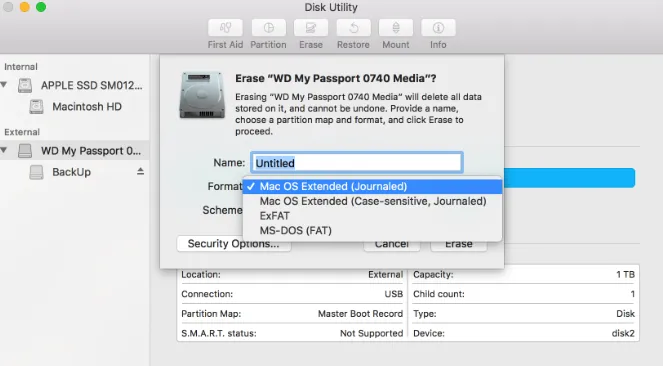

- #Read my passport for mac on windows pc mac os x#
- #Read my passport for mac on windows pc mac os#
- #Read my passport for mac on windows pc drivers#
- #Read my passport for mac on windows pc software#
Partitions, on the other hand, are enumerated from 1 and upwards, with Partition0 representing the whole drive. Hard disks are enumerated from 0 upwards. Harddisk1/Partition1 - First partition on hard drive 2.Harddisk0/Partition2 - Second partition of hard drive 1.Harddisk0/Partition1 - First partition on hard drive 1.Harddisk0/Partition0 - The entire first hard drive.The naming scheme is as in the following examples:

The easiest way to find your HFS+ volume is to press the "Autodetect" button, but in case it doesn't work, you can specify the device manually. The user will be presented with a dialog where it can choose which partition to read. This is because block devices in Windows are not as easily accessible as under UNIX-like systems. Windows users will have an additional alternative: Partition systems (Apple Partition Map, GUID Partition Table and Master Boot Record) will be autodetected if present. Another example is when you're on a UNIX-like system and want to access a block device (the file would be something like /dev/disk0 or /dev/hda).

This is for when the HFS+ file system is located on a file inside the current file system. Invoking the script file with no arguments prints usage instructions. There is also a minimal unmaintained text mode program for HFS+ only, which is started by invoking hfsx.bat/hfsx.sh. Windows Vista users can conveniently invoke UAC by running the VBScript hfsexplorer_vista.vbs. *nix systems can use the hfsexplorer.sh script to start the application, and Windows users can use the file hfsexplorer.bat.
#Read my passport for mac on windows pc mac os#
Users of Linux, Mac OS X, FreeBSD (and Windows users too, if they can not run an installer by any reason) can download the zip-file binary distribution (see top of page).Įxtract the zip file to a directory of your choice. If you are running Windows Vista or later a User Account Control dialog will appear so that you can grant HFSExplorer the necessary privileges to access block devices. The installer will place a shortcut to HFSExplorer in its start menu folder. Windows users only need to download the convenient installer (see the download links the top of the page), which will do everything for you. Second, make sure you have administrator or equivalent privileges if you're going to access physical disks. Installingįirst make sure you have Sun's Java SE Runtime Environment version 5.0 or greater (OpenJDK works fine).
#Read my passport for mac on windows pc drivers#
Linux and OS X users should in most cases not need HFSExplorer for browsing file systems on devices, since there are native file system drivers available on those systems, but it seems to work fine if you need it. HFSExplorer is written mostly in Java 5, optionally using some Java 6 / 7 features, with some Windows-specific parts written in C in order to be able to get raw access to block devices, and to create a practical launcher application.
#Read my passport for mac on windows pc software#
#Read my passport for mac on windows pc mac os x#


 0 kommentar(er)
0 kommentar(er)
